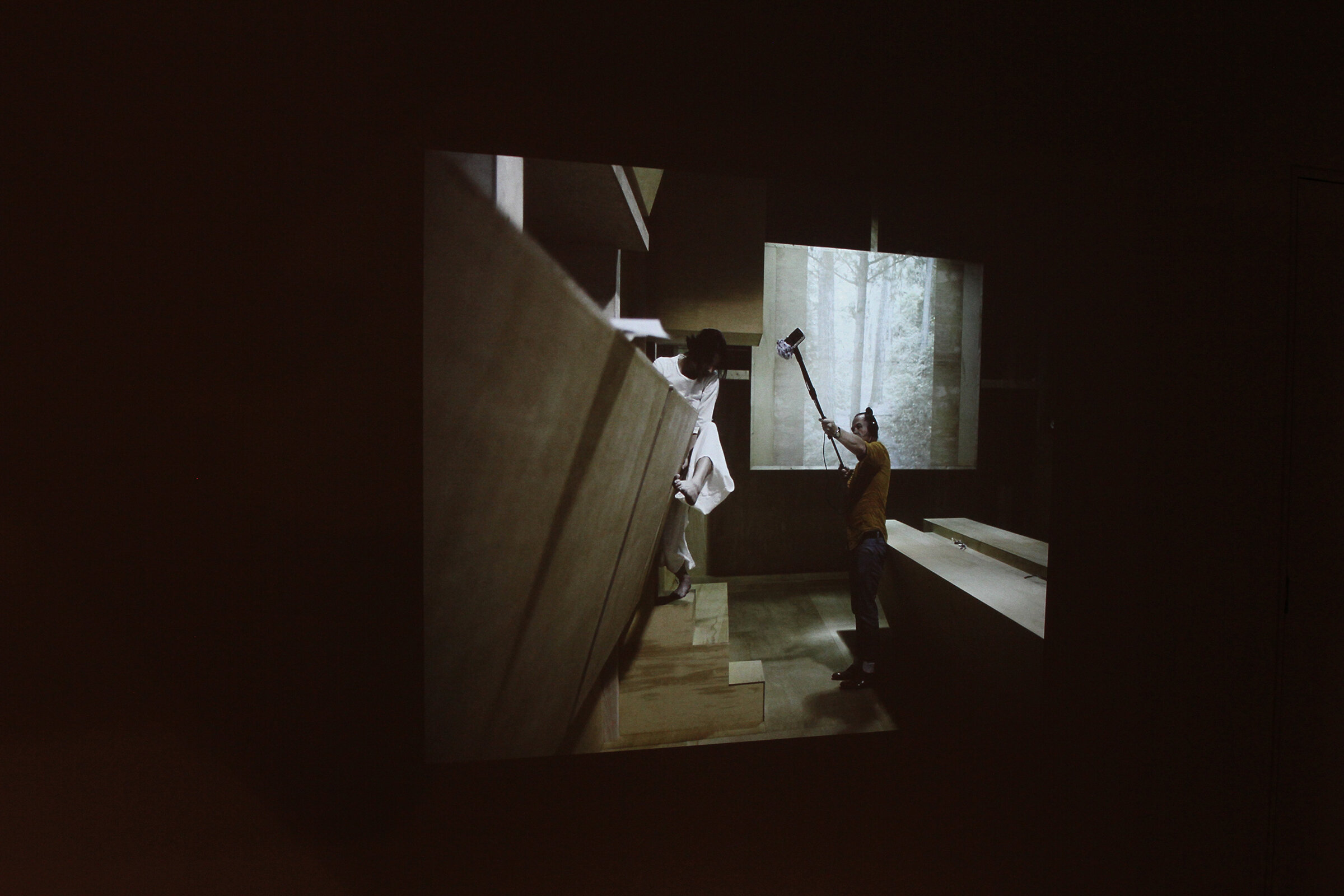Space is Sound
Artists: Allard Van Hoorn, Tim Bruniges, Sara Wallgren
an exhibition at the School of Visual Arts CP Project Space
Installation view.
While the concept of truth is contaminated by the former president through an epidemic of virtual manipulations and falsifications
artworks in this exhibition counteract the hijacked and de-credited rhetoric of broken information by presenting alternative epistemologies of invisible sound matter read through space.
Installation view. Video still. Allard van Hoorn, 005 Urban Songline (Latitude: 35.182182° N – 35.182141° N / Longitude: 126.888579° E – 126.888702° E) (2011).
Installation view. Video still. Allard van Hoorn, 005 Urban Songline (Latitude: 35.182182° N – 35.182141° N / Longitude: 126.888579° E – 126.888702° E) (2011).
The documentation of Allard van Hoorn’s 005 Urban Songline (Latitude: 35.182182° N – 35.182141° N / Longitude: 126.888579° E – 126.888702° E) (2011) shows a recorded performance of space. The performers fully utilize the stage’s tangible matter to create a language of their movement from a linear point in time to the next point, within the confines of a specific locale.
Sound is employed to communicate meaning by mimicking the shape of space. From here, information is transferred to the audience while also taking on the process of re-creation. Sound presents another layer of sensed architecture that is built within the physical space to create language.
Sound as music and noise itself holds information. However, it seems only to be witnessed through corporeal sense. It is considered somewhat inaccessible, unable to be utilized in an undecipherable language.
What if sound was able to be cognized as a medium for conveying specific form of thought?
Installation view.
Opening the processes performed by and during creatively experimenting with the medium unearths affective information that it holds, which invariably influences how we think, and act, in the future.
Parallels are made clear between sound as an information system and its possibilities for resonant cultural meaning.
Installation view. Video still. Tim Bruniges. MIRRORS Aalst (2017).
Beyond the nexus of finite definitions, Tim Bruniges’ MIRRORS Aalst (2017) offers documentation of an infinite-duration artwork. The large concave spheres respond to one another and reveal extemporal meaning outside of ambient acoustics. As with the interactions engendered between animate beings, the artist’s constructed “spaces” of meaning cultivate and expand our awareness and creative potential. They surpass localized place and material bounds through depersonalized experience and affect.
Installation view. Sarah Wallgren. Noise Drawings (2015).
Sara Wallgren’s series titled Noise Drawings (2015) interprets meaning from unreadable sounds to the visual and tactile medium of graphite on canvas. The uncertainty of noise is inscribed into a drawing, and this process transfers meaning from the sonic to the visual realm.
The works provide a framework for broadening accessibility to previously unknown information by deciphering an invisible architecture and redefining associated signification.
Artwork Labels and Artist Bios:





